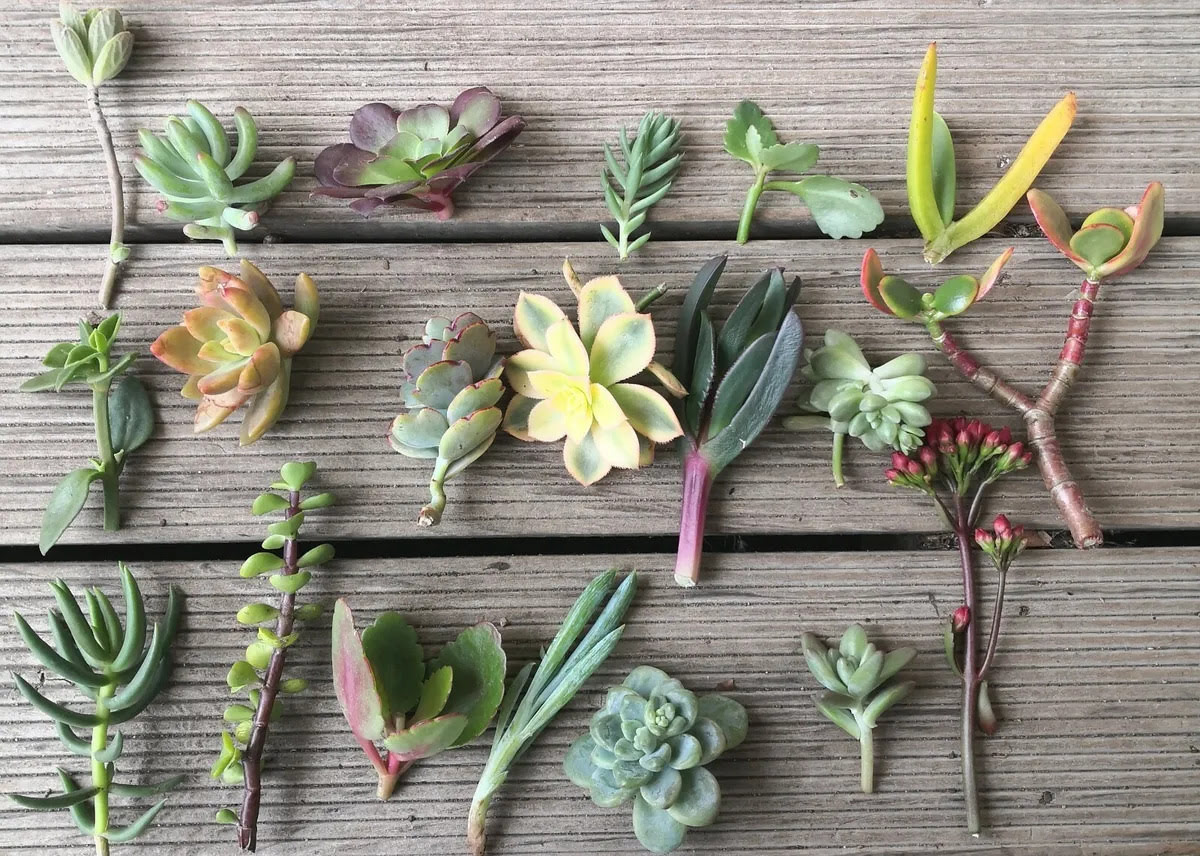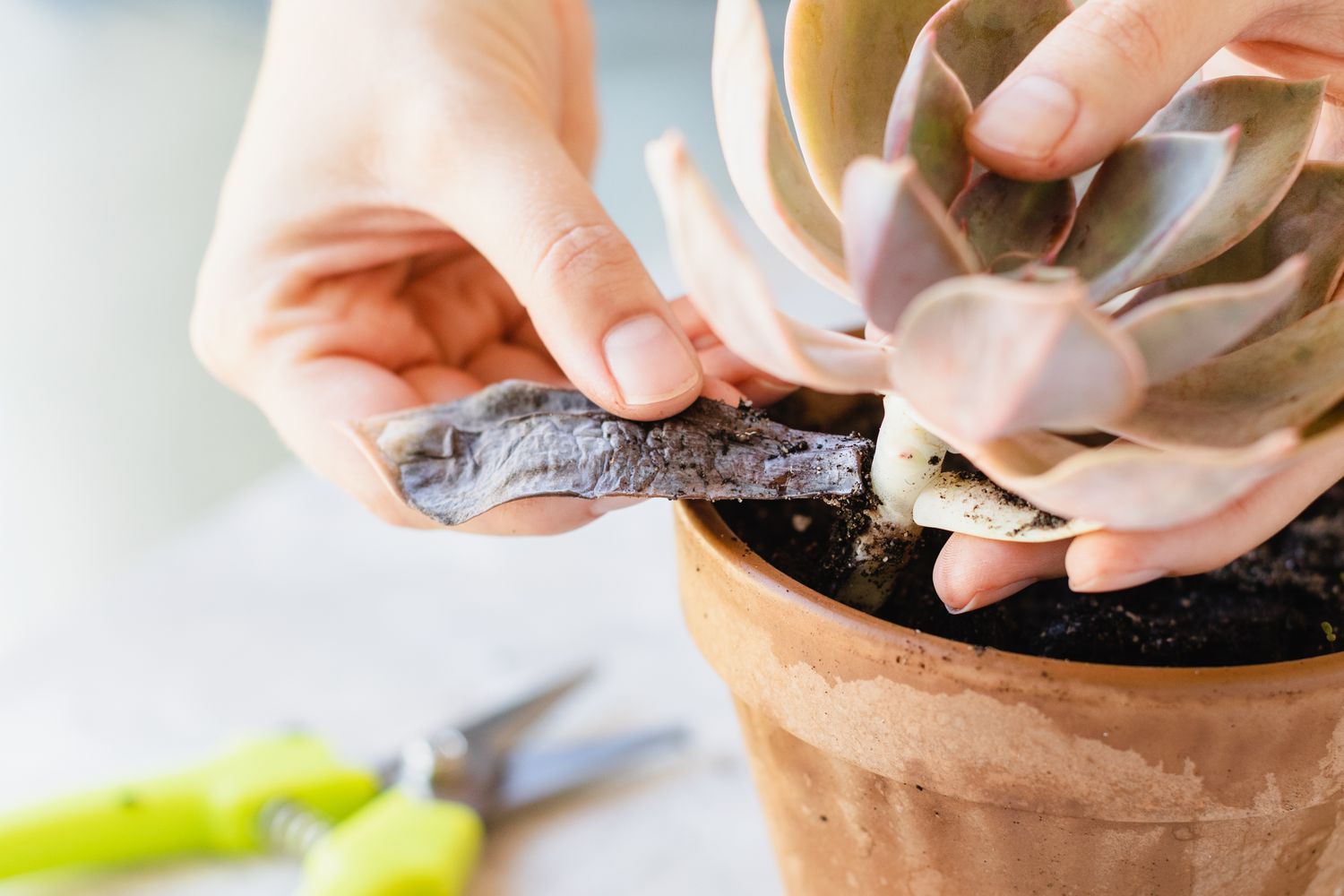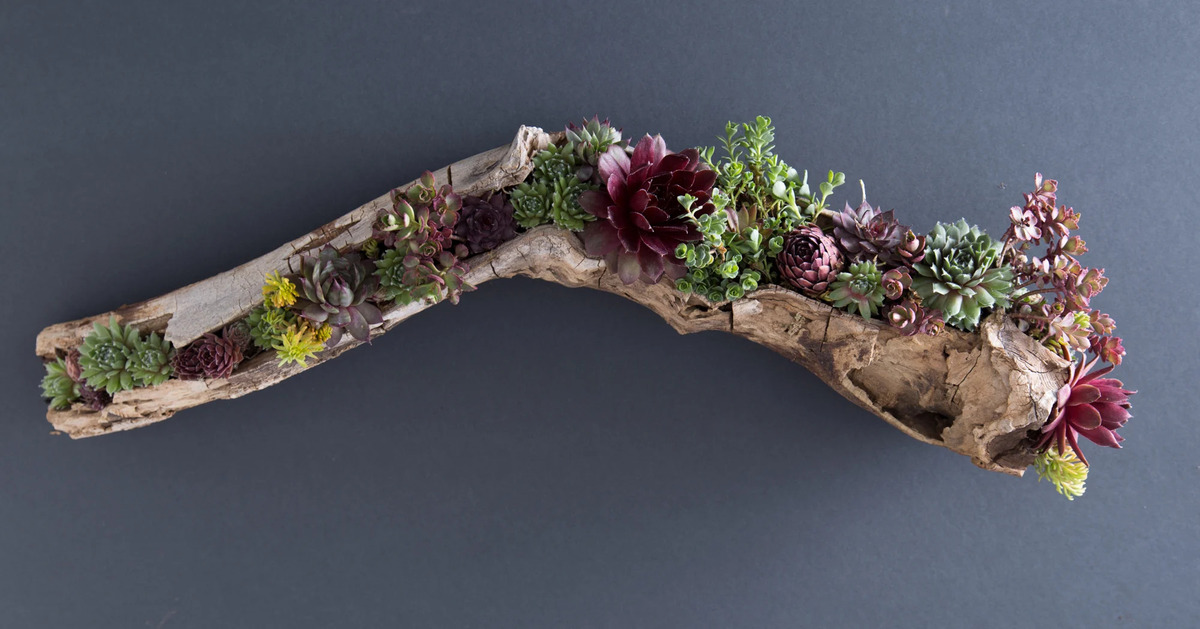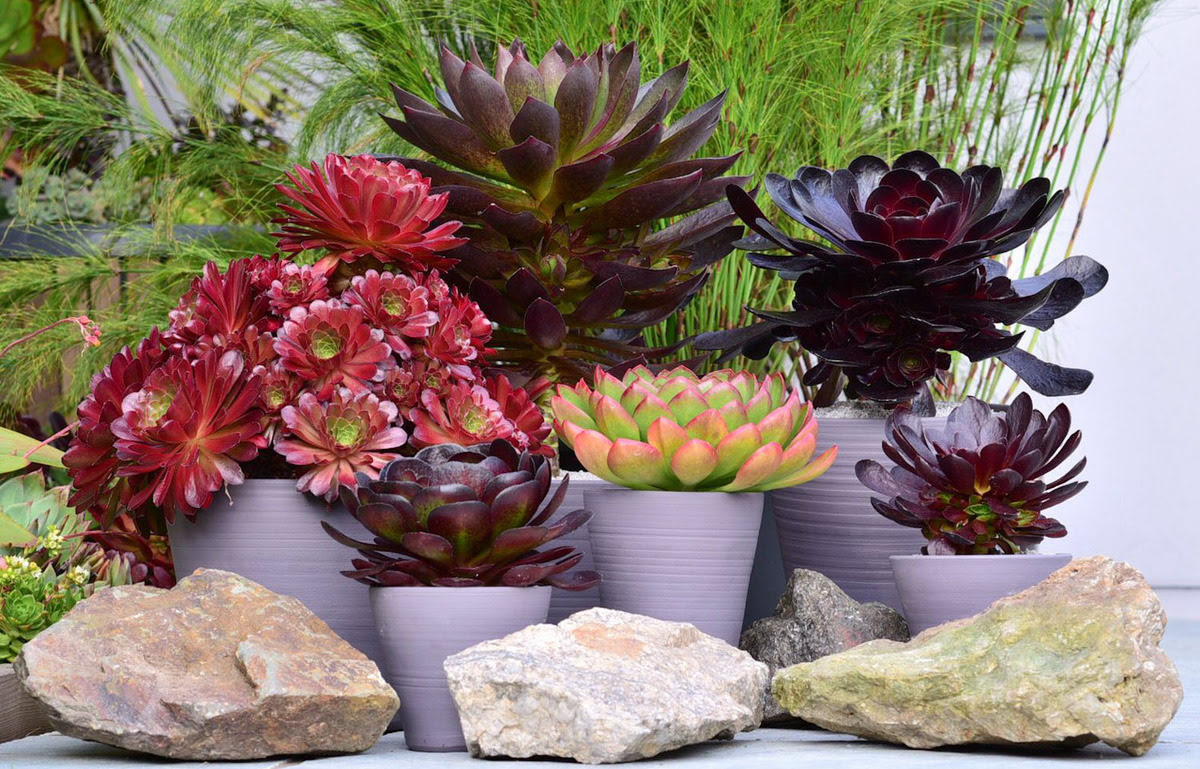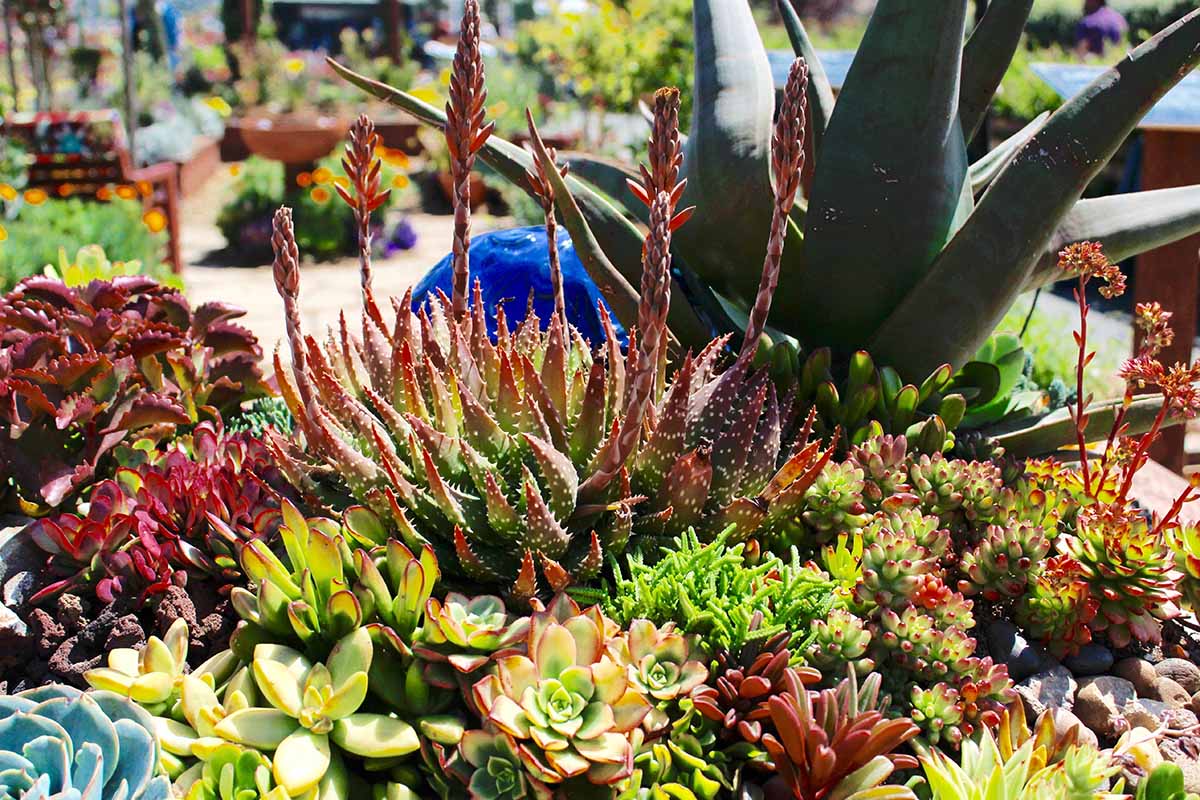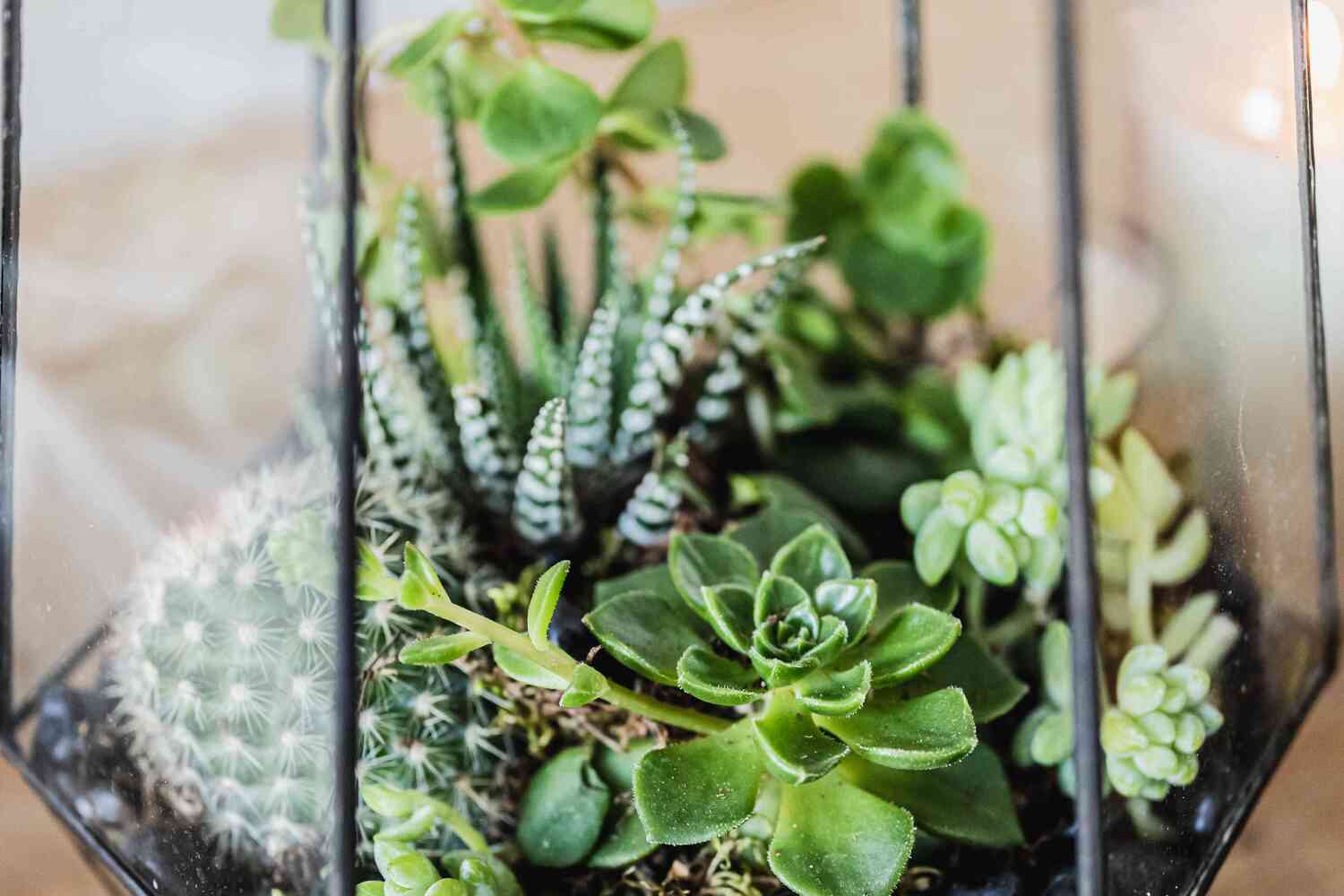Home>Gardening Techniques>Plant Care>How To Id Succulents


Plant Care
How To Id Succulents
Modified: January 22, 2024
Learn how to identify and care for succulent plants with our comprehensive guide on plant care. Find tips for watering, lighting, and more.
(Many of the links in this article redirect to a specific reviewed product. Your purchase of these products through affiliate links helps to generate commission for Chicagolandgardening.com, at no extra cost. Learn more)
Table of Contents
Introduction
Welcome to the wonderful world of succulents! Whether you’re a seasoned gardener or a beginner looking to add some green to your space, succulents are a fantastic choice. With their unique shapes, incredible colors, and low maintenance requirements, they have become increasingly popular among plant enthusiasts.
Succulents are a type of plant that have adapted to survive in arid conditions by storing water in their leaves, stems, and roots. This adaptation gives them their characteristic fleshy appearance and makes them highly resilient to drought. They come in a wide variety of shapes, sizes, and colors, making them a versatile addition to any indoor or outdoor space.
In this article, we will guide you through the process of identifying different succulent varieties, examining their characteristics, and understanding their care requirements. By the end, you’ll be able to confidently distinguish between various succulents and provide them with the care they need to thrive.
Whether you’re looking to create a succulent garden, adorn your windowsill with a few potted plants, or simply want to learn more about these fascinating plants, this guide will help you become a succulent expert. So, let’s dive in and explore the world of succulents!
Choosing the Right Succulent
When it comes to selecting the perfect succulent for your space, there are a few factors to consider. First and foremost, assess the lighting conditions in the area where you plan to place your succulent. Succulents generally thrive in bright, indirect light, so choose a variety that matches the available light levels.
Next, consider the size of the space and the eventual growth of the succulent. Some varieties, like the popular Echeveria or Aloe Vera, stay relatively small and compact, making them ideal for smaller spaces or arrangements. On the other hand, larger succulents like Agave or Jade plants can make a bold statement as standalone specimens or focal points in a larger garden.
The level of maintenance required is another important consideration. While many succulents are known for their low maintenance nature, some varieties may require more frequent waterings or specialized care. If you’re a beginner or have a busy schedule, opting for more resilient and forgiving succulents like Haworthia or Sedum is a wise choice.
Additionally, think about the overall aesthetic you’d like to achieve. Succulents come in all shapes, sizes, and colors, enabling you to create a stunning display that suits your personal style. From the vibrant hues of Echeveria ‘Lola’ to the architectural elegance of Sansevieria cylindrica, there is a succulent for every taste and design preference.
Lastly, consider the purpose of the succulent. Are you looking to enhance your indoor space, add life to an outdoor garden, or create a unique centerpiece? Different succulents lend themselves well to different settings. For instance, trailing succulents like String of Pearls can be perfect for hanging baskets or cascading over a tall planter, while rosette-shaped succulents like Sempervivum are ideal for ground cover or rock gardens.
By taking all these factors into account, you can choose the right succulent that not only thrives in its environment but also brings joy and beauty to your space. Remember to have fun exploring the vast array of options available and don’t be afraid to mix and match different succulent varieties for a visually stunning and diverse collection.
Identifying Succulent Varieties
With so many different types of succulents to choose from, it’s helpful to familiarize yourself with the key characteristics that define each variety. By learning to identify the unique features of different succulents, you can easily distinguish one variety from another and expand your succulent collection with confidence.
One way to identify succulent varieties is by examining the shape and texture of their leaves. Some succulents, like Echeveria and Haworthia, have rosette-shaped leaves that form tight, compact clusters. Others, such as Sedum and Crassula, have thicker, plump leaves that can range in shape from cylindrical to paddle-like. Pay attention to the size, thickness, and arrangement of the leaves to narrow down the possibilities.
In addition to leaf shape, the growth habit and size of the succulent can also be helpful in identification. Some succulents, like Aloe Vera and Agave, have a more upright and architectural growth habit, while others, like Sedum ‘Burro’s Tail’ and Senecio ‘String of Pearls’, have a trailing or cascading growth habit. Understanding the potential size and growth pattern of a succulent can help you determine whether it’s suitable for a particular location or container.
Color and pattern variation is another distinguishing feature among succulent varieties. While most succulents have green leaves, many also exhibit shades of pink, purple, blue, or even variegation. Look for distinct patterns, such as stripes, dots, or marbling, that can help differentiate one variety from another.
Flowering patterns can also provide clues for identifying succulents. Some succulents, like Kalanchoe and Echeveria, produce beautiful blooms in a variety of colors. However, not all succulents bloom, and those that do may have different flower shapes, sizes, and colors. Observing the flowers can be particularly useful when identifying succulents that have similar leaf characteristics.
Lastly, be mindful of common pests and diseases that affect succulents. Different varieties may have varying levels of resistance to pests like mealybugs or aphids, and susceptibility to diseases like root rot. Keeping a keen eye out for any signs of damage or infestation can also help in the identification process.
By paying attention to leaf shape, growth habit, color variation, flowering patterns, and pest resilience, you can become proficient in identifying various succulent varieties. This knowledge will not only make you a more knowledgeable plant enthusiast but also help you provide the specific care that each type of succulent requires.
Examining Leaf Shape and Texture
The leaves of succulents come in a mesmerizing array of shapes and textures, making them a key feature to consider when identifying different varieties. By paying close attention to the leaf characteristics, you can uncover valuable clues that can help you distinguish one succulent from another.
One of the most noticeable aspects of succulent leaves is their shape. Some succulents, such as Echeveria and Sempervivum, have rosette-shaped leaves that form tight clusters with a central point of growth. Other varieties, like Aloe and Agave, have long, lanceolate leaves that grow in an upright manner. Take note of the overall shape of the leaves, as well as any unique twists or curves.
The texture of succulent leaves can vary greatly as well. Some have smooth and glossy leaves, like Haworthia and Sedum ‘Jelly Bean’, while others have rough and textured leaves, like Crassula and Kalanchoe. Gently run your fingers along the leaves to feel the textures and take note of any interesting patterns or ridges.
The thickness of the leaves is another important factor to consider. Some succulents, like Graptopetalum and Echeveria ‘Lola’, have thick, fleshy leaves that store water, giving them a plump appearance. Others, like Sansevieria and Haworthia ‘Zebra’, have thinner leaves that are able to withstand harsher conditions. The thickness of the leaves can indicate the succulent’s water-holding capacity and resilience to drought.
Leaf color is also a distinguishing characteristic among succulents. While green is the most common color, succulent leaves can range from vibrant shades of red and pink to cool hues of blue and purple. Some succulents even exhibit variegation, with patterns of different colors or shades on their leaves. Pay attention to the color variations and any unique markings or patterns that may help with identification.
In addition to the shape and texture of the leaves, it’s worthwhile to observe other leaf features as well. Look for leaf tips that may be pointed or rounded, leaf margins that may be smooth or serrated, and leaf edges that may be smooth or covered in small spines. These finer details can further assist in accurately identifying succulents.
By examining the leaf shape, texture, thickness, color, and other leaf features, you can become adept at identifying different succulent varieties. This knowledge will not only enhance your appreciation for the diversity within the succulent world but also help you provide the optimal care that each succulent requires to thrive.
Noting Growth Habit and Size
Understanding the growth habit and size of succulents is crucial for proper care and effective utilization of these stunning plants in your indoor or outdoor spaces. Each succulent variety has its own unique growth pattern, which determines how it will develop and fit into your desired aesthetic and functional goals.
One key aspect to observe is the growth habit of succulents. Some succulents, like Aloe Vera and Agave, have an upright growth habit, with their leaves or stems rising in a vertical manner. This growth habit allows them to stand tall and make a statement as a focal point in your garden or as a centerpiece on your tabletop. On the other hand, trailing or cascading succulents, such as Sedum ‘Burro’s Tail’ and Senecio ‘String of Pearls’, have a spreading growth habit, making them perfect for hanging baskets or trailing over the edge of a shelf or planter.
The eventual size of a succulent is another important consideration. Some succulents, like Echeveria and Haworthia, stay relatively small and compact, with their rosettes reaching only a few inches in diameter. These smaller succulents are well-suited for windowsills, smaller containers, or arrangements where space is limited. Conversely, larger succulents like Agave and Crassula ovata (Jade Plant) can grow several feet in height and width, commanding attention as striking focal points in a larger garden or landscape.
It’s also important to note that the growth rate of succulents can vary. Some varieties, like Sedum and Graptopetalum, are fast growers, quickly filling out their space and requiring more frequent pruning or repotting. Other succulents, like Sansevieria and Sempervivum, have a slower growth rate, making them great choices for those who prefer a more controlled, low-maintenance garden.
In addition to observing the growth habit and size of the overall plant, pay attention to individual stem or leaf growth patterns. Some succulents, like Euphorbia tirucalli (Pencil Cactus), have long, slender stems that grow upwards, resembling a pencil or cactus. Others, like Sedum morganianum (Burro’s Tail), produce trailing stems that drape gracefully over the edge of a container. These growth patterns contribute to the unique charm and visual appeal of each succulent.
By noting the growth habit and size of succulents, you can make informed decisions about where to place them in your garden or how to incorporate them into your indoor space. Additionally, understanding the growth rate and patterns can help you anticipate the care requirements, such as pruning, repotting, or staking, that may be necessary to ensure the health and aesthetics of your succulents.
Observing Color and Pattern Variation
The vibrant colors and intricate patterns of succulents are a major part of their allure. Each succulent variety boasts its own unique combination of colors and patterns, making them visually captivating and delightful to observe. By paying attention to these variations, you can easily differentiate one succulent from another and create captivating displays in your garden or indoor space.
Color is one of the most distinguishable features of succulents. While many succulents have green leaves, their hues can vary significantly. Some varieties, like Echeveria ‘Lola’ and Sedum ‘Firestorm’, exhibit intense shades of pink, purple, or red, adding a bold pop of color to your collection. Others, such as Agave parryi and Haworthia attenuata, feature more subdued hues of gray or blue, lending an air of serenity and elegance to any arrangement. Pay attention to the range of colors on the leaves, as well as any gradients or transitions that occur.
In addition to the base color, succulents can showcase stunning patterns and markings. Some species, like Aloe polyphylla and Lithops, exhibit mesmerizing geometric patterns on their leaves, resembling intricate mosaics or marbled designs. Others, such as Sansevieria trifasciata ‘Hahnii’ and Pachyphytum oviferum, have contrasting bands or stripes that create a striking visual contrast. Be on the lookout for these distinctive patterns and markings as they can be key identifiers for specific succulent varieties.
Variegation is another fascinating color variation that can occur in succulents. Variegated succulents display patches, streaks, or borders of different colors on their leaves, resulting in a mesmerizing mosaic effect. This unique characteristic adds an extra level of visual interest and intrigue to your succulent collection. Examples of popular variegated succulents include Echeveria ‘Perle von Nurnberg’ and Crassula ovata ‘Variegata’.
It’s also important to note that color variation in succulents can be influenced by environmental factors such as light intensity, temperature, and seasonality. Some succulents may exhibit more intense colors when exposed to bright, indirect sunlight, while others may develop deeper hues in colder temperatures. By carefully observing the color variations under different conditions, you can further appreciate the dynamic nature of succulents.
With their diverse array of colors and patterns, succulents provide endless opportunities for creative and aesthetically pleasing arrangements. By incorporating succulents with different color variations in your garden or indoor space, you can create captivating displays that are sure to be a visual delight.
Assessing Flowering Patterns
While the foliage of succulents is undoubtedly stunning, many varieties also produce beautiful flowers, adding an extra layer of visual appeal to these already captivating plants. Observing the flowering patterns can provide valuable insights for identifying succulents and understanding their blooming habits.
First, it’s important to note that not all succulents produce flowers, and those that do may have different flowering patterns. Some succulents, like Kalanchoe and Echeveria, are known for their prolific blooms, producing clusters of colorful flowers that add a burst of vibrancy to any space. Others, such as Sedum and Crassula, may have smaller, less showy flowers, but still offer a charming and delicate display.
The timing of flowering can also vary among succulents. Some succulents flower seasonally, producing blooms during specific times of the year, while others may have sporadic or continuous flowering patterns. Observing the timing of flowering can not only help with identifying specific succulent varieties but also provide insights into their natural life cycle.
When examining the flowers of succulents, pay attention to the shape, size, and color of the blooms. Some succulents, like Aloe Vera and Agave, have long, tubular flowers that are often rich in nectar, attracting pollinators such as bees and hummingbirds. Others, like Crassula marnieriana and Kalanchoe luciae, have compact clusters of small, star-shaped flowers. Take note of the color variations, as different succulents may produce flowers in shades of white, yellow, pink, orange, or red.
It’s worth mentioning that the flowering period of succulents can be influenced by various factors, including light exposure, temperature, and overall plant health. Adequate sunlight, proper growing conditions, and appropriate care can contribute to more prolific and longer-lasting blooms. Conversely, lack of light, improper temperature, or neglect may result in fewer or no flowers. Understanding the ideal conditions for flowering can assist in promoting healthy blooms.
While the presence of flowers may not be the primary factor in identifying succulents, they serve as a delightful bonus to their already striking foliage. Embrace the beauty of succulent blooms and enjoy the ever-changing display they offer throughout the year.
Identifying Common Pests and Diseases
While succulents are generally resilient plants, they are not immune to pests and diseases. Being able to identify common issues that affect succulents is essential for early detection and prompt treatment, ensuring the health and longevity of your plants.
One common pest that succulents may encounter is the mealybug. Mealybugs are small, soft-bodied insects that appear as white, cottony masses on the leaves, stems, and crevices of succulents. They feed by sucking sap from the plant, causing wilting, stunted growth, and yellowing of leaves. Aphids are another common pest that can infest succulents, typically appearing as small, green or black insects that cluster on the undersides of leaves and stems. These pests can weaken the plant and spread diseases.
Fungal infections are also a concern for succulents. One common fungal disease is root rot, which is caused by overwatering and poorly draining soil. Symptoms include yellowing or browning of leaves, wilting, and a foul smell from the roots. Another fungal condition is powdery mildew, characterized by a white, powdery coating on the leaves, stems, and flowers of succulents. It can hinder growth and limit photosynthesis.
Identifying these pests and diseases involves careful observation of your succulents. Look for signs such as sticky residue, cottony masses, small insects, or yellowing and wilting leaves. Inspect the stems, leaves, and roots of your plants regularly to catch any issues early on. It’s also important to note that prevention is key. Ensure proper watering practices, provide adequate airflow around your succulents, and maintain optimal growing conditions to reduce the risk of pests and diseases.
In the case of pest infestations, various methods can be employed to control them. These include using natural remedies like neem oil or insecticidal soaps, manually removing pests by wiping them off with a cotton swab dipped in alcohol, or introducing beneficial insects like ladybugs or predatory mites to help control the population. For fungal diseases, it’s essential to identify the specific pathogen causing the issue and treat it with appropriate fungicides or by adjusting cultural practices.
By being vigilant and proactive in identifying common pests and diseases, you can take necessary steps to mitigate their impact on your succulents. Regular observation, early intervention, and proper care practices are key to maintaining the health and beauty of your succulent collection.
Conclusion
Congratulations! You’ve now gained a wealth of knowledge on identifying and caring for succulents. By understanding the factors involved in choosing the right succulent, such as lighting, size, maintenance, and aesthetic preferences, you can confidently select the perfect plants for your space.
Examining the leaf shape, texture, and color variations allows you to distinguish between different succulent varieties. This attention to detail helps you appreciate the incredible diversity and intricacies that succulents offer.
Noting the growth habit and size of succulents ensures that you can place them appropriately in your garden or indoor space, taking into account their eventual size and growth pattern. This understanding allows you to create visually pleasing displays that take full advantage of their natural form.
Observing the color and pattern variation enhances the visual appeal of your succulent collection. The stunning displays of color and unique markings make every succulent a work of living art.
Understanding the flowering patterns of succulents adds another layer of beauty and interest to these remarkable plants. By recognizing when and how succulents bloom, you can fully appreciate the cyclical nature of their growth and enjoy their captivating flowers.
Lastly, identifying common pests and diseases equips you with the knowledge to detect issues early and take appropriate measures to protect your succulents from damage. By being proactive in monitoring your plants and implementing diligent care practices, you ensure their long-term health and vitality.
With this comprehensive understanding of succulents, you are well on your way to becoming a confident and successful succulent enthusiast. So, go ahead and dive into the world of succulents with excitement and creativity. Enjoy the journey as you care for and cultivate these fascinating plants, bringing life and beauty to your surroundings. Happy succulent gardening!
